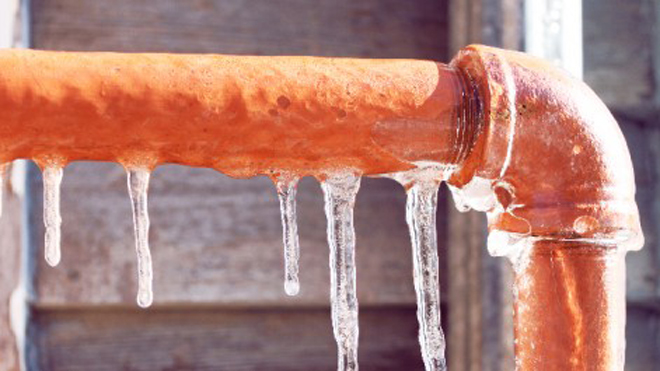What're your insights and beliefs about 6 Ways to Prevent Frozen Pipes?

Winter can ruin your pipes, especially by freezing pipelines. Here's exactly how to stop it from occurring and what to do if it does.
Introduction
As temperature levels decline, the risk of icy pipelines increases, potentially leading to expensive fixings and water damage. Recognizing how to avoid icy pipelines is crucial for homeowners in cool environments.
Avoidance Tips
Shielding susceptible pipelines
Cover pipelines in insulation sleeves or use warmth tape to safeguard them from freezing temperatures. Focus on pipelines in unheated or external areas of the home.
Home heating strategies
Keep indoor rooms properly heated up, especially locations with pipes. Open up cabinet doors to enable cozy air to flow around pipelines under sinks.
Just how to determine frozen pipes
Try to find decreased water flow from faucets, unusual odors or noises from pipelines, and noticeable frost on revealed pipes.
Long-Term Solutions
Structural adjustments
Take into consideration rerouting pipes far from exterior wall surfaces or unheated areas. Include additional insulation to attics, basements, and crawl spaces.
Upgrading insulation
Invest in high-quality insulation for pipes, attic rooms, and walls. Proper insulation helps maintain consistent temperature levels and minimizes the danger of frozen pipelines.
Shielding Outdoor Plumbing
Garden pipes and outside taps
Detach and drain pipes garden pipes prior to winter months. Set up frost-proof spigots or cover outside taps with protected caps.
Comprehending Frozen Pipes
What triggers pipelines to freeze?
Pipes freeze when exposed to temperature levels listed below 32 ° F (0 ° C) for expanded durations. As water inside the pipes freezes, it broadens, putting pressure on the pipeline walls and possibly causing them to rupture.
Threats and problems
Icy pipes can result in supply of water disruptions, property damages, and costly repairs. Burst pipes can flooding homes and cause substantial architectural damage.
Indicators of Frozen Pipeline
Recognizing icy pipes early can stop them from bursting.
What to Do If Your Pipes Freeze
Immediate actions to take
If you believe frozen pipes, keep taps available to soothe pressure as the ice thaws. Make use of a hairdryer or towels soaked in warm water to thaw pipelines slowly.
Conclusion
Stopping frozen pipes requires proactive measures and fast responses. By understanding the reasons, signs, and safety nets, house owners can protect their pipes throughout cold weather.
6 Proven Ways to Prevent Frozen Pipes and Protect Your Home
Disconnect and Drain Garden Hoses
Before winter arrives, start by disconnecting your garden hoses and draining any remaining water. Close the shut-off valves that supply outdoor hose bibs and leave the outdoor faucet open to allow any residual water to drain. For extra protection, consider using faucet covers throughout the colder months. It’s also important to drain water from any sprinkler supply lines following the manufacturer’s directions.
Insulate Exposed Pipes
Insulating your pipes is an effective way to prevent freezing. Pipe insulation is readily available at home improvement stores and is relatively inexpensive. Pay close attention to pipes in unheated areas such as the attic, basement, crawl spaces, or garage. Apply foam insulation generously to create a buffer against the cold. You can also wrap your pipes in heat tape or thermostat-controlled heat cables for added warmth.
Seal Air Leaks
Inspect your home for any cracks or openings that could let in cold air. Seal any holes around the piping in interior or exterior walls, as well as the sill plates where your home rests on its foundation. Additionally, make sure to keep your garage door closed unless you’re entering or exiting. Leaving it open creates a significant air leak that can lead to frozen pipes.
Allow Warm Air Circulation
During cold snaps, it’s essential to allow warm air to circulate evenly throughout your home. Leave interior doors ajar to promote better airflow. Open kitchen and bathroom cabinets to help distribute heat consistently around the rooms. If you have small children or pets, be sure to remove any household chemicals or potentially harmful cleaners from open cabinets for safety.
Let Faucets Drip
A small trickle of water can make a big difference in preventing ice formation inside your pipes. When temperatures drop significantly, start a drip of water from all faucets served by exposed pipes. This continuous flow helps prevent the water from freezing. Additionally, running a few faucets slightly can relieve pressure inside the pipes, reducing the chances of a rupture if the water inside does freeze.
https://choateshvac.com/6-proven-ways-to-prevent-frozen-pipes-and-protect-your-home/

I was shown that write-up on Prevent Frozen Pipes from someone on a different web blog. Are you aware of somebody who is intrigued by the topic? Why not share it. We enjoy reading our article about How to Prevent Your Pipes From Freezing.
Contact Us